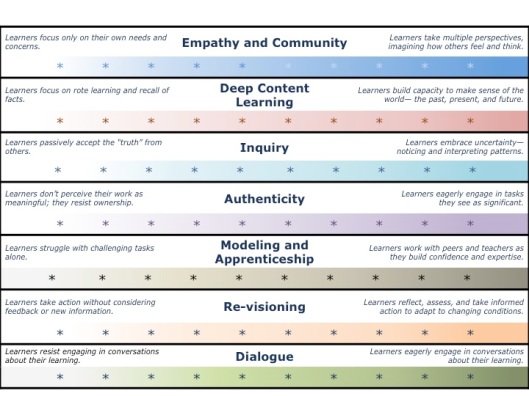When I walk into a school, it takes me about five minutes to know whether it’s a powerful place for students and teachers to learn. It’s not about whether they have the latest technology, and it’s  not about their test scores. There’s a feeling, an attitude, a tone, a climate on a campus like this–a campus where teachers and students alike can take the risks inherent in authentic learning.
not about their test scores. There’s a feeling, an attitude, a tone, a climate on a campus like this–a campus where teachers and students alike can take the risks inherent in authentic learning.
What policy-makers do not seem to recognize is that each of these excellent learning places is unique. Powerful teaching and learning cannot be standardized–no five easy steps; no fool-proof method. These powerful schools are by no means the same, but there are similarities–similarities in the ways teaching and learning even in the wide diversity we see across these schools.
Across these “schools and classrooms that work,” we see similar features, but these features are merely similar–not the same. They vary–sometimes only slightly–in response to the unique features of each community. We see these similarities as “patterns .”
What are the patterns in these powerful learning places? Here is a list of what we have seen–both in the classrooms we know and in the research we read:
- Empathy and Responsiveness
- Inquiry
- Dialogue
- Authenticity
- Re-visioning and Adaptation
- Apprenticeship
- Deep Content Learning
We use this list of patterns as a springboard for conversations about our goals for learners. There’s nothing sacred about these labels. Some groups decide to talk about “accountable talk” instead of “dialogue” or “modeling” instead of “apprenticeship.” The particular language is not important, but those conversations about the patterns are critical if we want to set the conditions for powerful learning.
Teachers in the North Star of Texas Writing Project (a local site of the National Writing Project) have developed this chart to explain these patterns as they use them in their professional development work:
Do these patterns make sense to you and your colleagues? Do they seem true? Do they seem useful? Which three patterns would you choose to prioritize on your campus? Check these out and let us know what you think!


